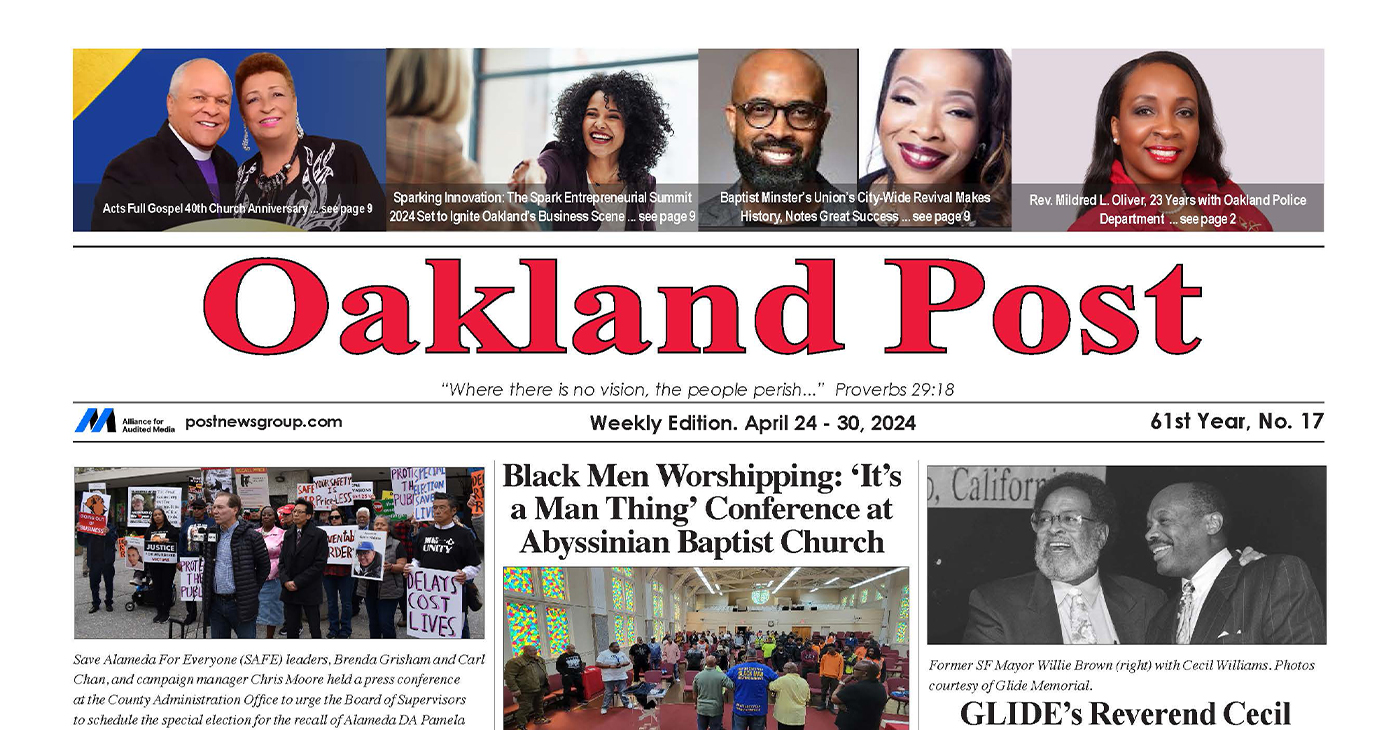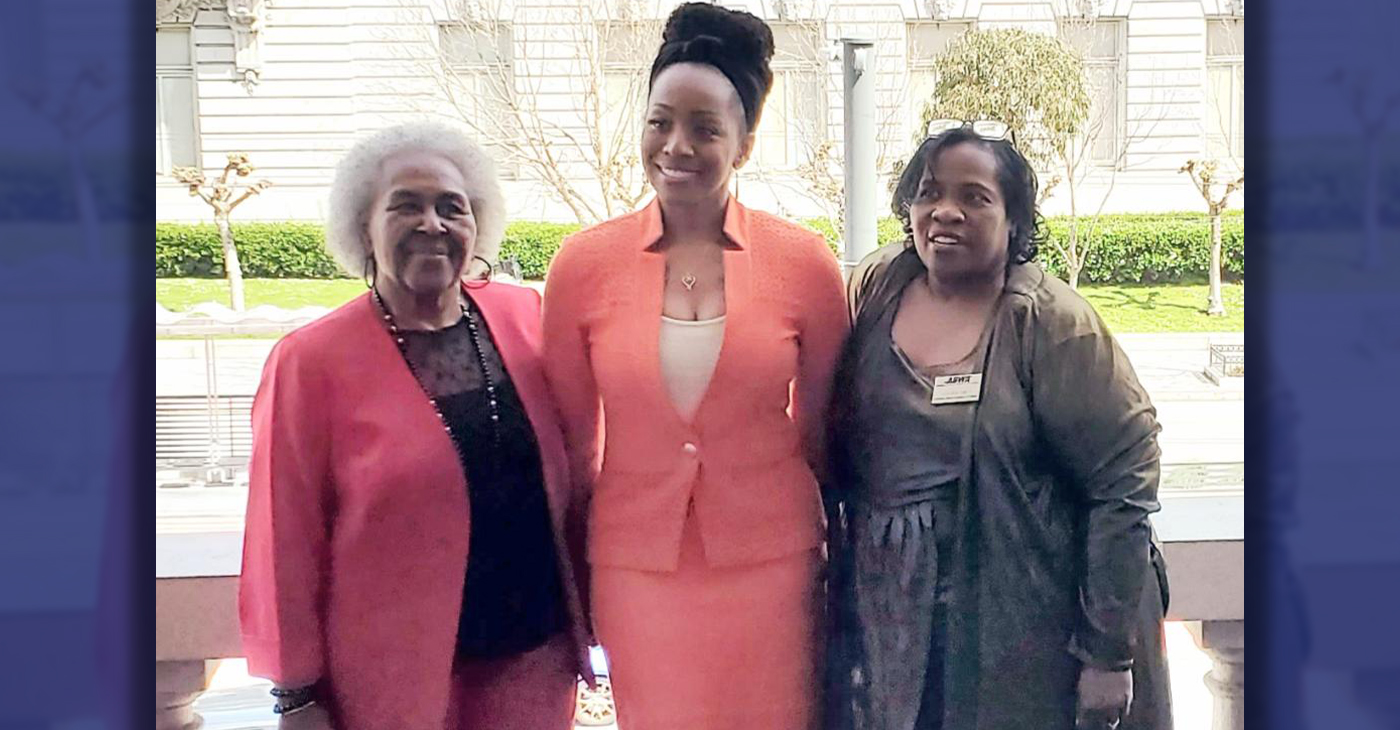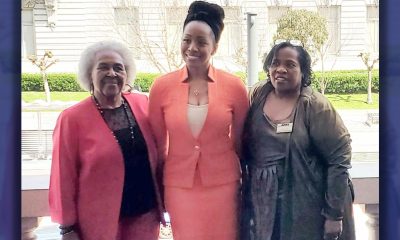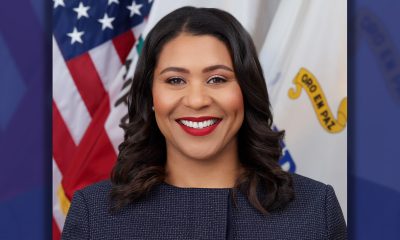Bay Area
San Francisco’s Clinic by the Bay Restored and Reopened in New Location
Clinic by the Bay (CBB), a volunteer-powered free health clinic for the working uninsured, hosted a tour of its new health care clinic in the fully renovated Alemany Emergency Hospital at 35 Onondaga Avenue in San Francisco on Dec. 19. The new facility will offer expanded services including extended hours, a new dental care service and free pharmacy.

By Carla Thomas
Clinic by the Bay (CBB), a volunteer-powered free health clinic for the working uninsured, hosted a tour of its new health care clinic in the fully renovated Alemany Emergency Hospital at 35 Onondaga Avenue in San Francisco on Dec. 19. The new facility will offer expanded services including extended hours, a new dental care service and free pharmacy.
“It’s exciting to be putting on the finishing touches to our new, yet historic, facility,” said CBB Founder and Board President Janet Reilly. “We’re so grateful to our volunteers, donors, patients, and the City of San Francisco for their enthusiastic support of this project. They’ve helped bring this vision to life, and we can’t wait to open our doors and welcome everyone.”
As one of only two entirely free clinics in San Francisco, CBB provides healthcare to low-income and uninsured individuals.
The new healthcare clinic, supported by $5.3 million in donations, is just around the corner from their previous home at 4877 Mission Street and has operated for 13 years.
Tours led by Reilly, Director Sarah Gordon and Dr. David Goldschmid, Director of Medicine showcased the $5 million renovation.
The tour provided a preview of the medical exam rooms, consult rooms for non-medical visits like health coaching and counseling, the dental operatory, and the free pharmacy. The facility also has designated workspaces for volunteers and staff.
“Clinic by the Bay fills an essential need by reaching a unique population of families and individuals who do not have access to quality healthcare or qualify for important safety nets,” said Gordon.
CBB is solely funded by foundations and individuals, the organization is completely independent of government money or insurance reimbursements.
As CBB expanded its free services, it outgrew its current space. Through a unique partnership with the City of San Francisco, Clinic by the Bay embarked on restoring the historic Alemany Hospital and returning it to its original use.
The original Alemany Emergency Hospital was opened in 1933 and was part of a network of seven emergency hospitals across the city. It was the last hospital added to the network to serve the needs of the growing Excelsior district and regarded as one of the world’s finest emergency hospital systems. After 45 years of serving the community, the hospital was closed in 1978 and has been vacant ever since. The new restoration retained the building’s traditional brick façade, arched entryway, and storefront windows. The original ambulance bay now serves as the main entrance.
“When the Alemany Hospital was slated for closure in 1978, dozens of dedicated healthcare workers protested and staged a six-week sit-in at the hospital,” said CBB Executive Director Sarah Gordon. “We’re reviving that compassionate spirit today and giving new life to a beloved historical landmark by providing our community excellent healthcare free of charge.”
“Many of our patients come through our doors ill or suffering from chronicle diseases that have gone unchecked and undiagnosed for years, and for some, Clinic by the Bay is the difference between life and death,” said Goldschmid. “Because of our team of nearly all-volunteer retired and working medical and non-medical professionals, we can provide life-saving care for our patients at no cost.”
CBB is affiliated with Volunteers in Medicine (VIM) to engage with retired physicians, nurses, and others to provide comprehensive primary care to the uninsured and underserved.
Activism
Oakland Post: Week of April 24 – 30, 2024
The printed Weekly Edition of the Oakland Post: Week of April 24 – 30, 2024

To enlarge your view of this issue, use the slider, magnifying glass icon or full page icon in the lower right corner of the browser window. ![]()
Alameda County
DA Pamela Price Stands by Mom Who Lost Son to Gun Violence in Oakland
Last week, The Post published a photo showing Alameda County District Attorney Pamela Price with Carol Jones, whose son, Patrick DeMarco Scott, was gunned down by an unknown assailant in 2018.

Publisher’s note: Last week, The Post published a photo showing Alameda County District Attorney Pamela Price with Carol Jones, whose son, Patrick DeMarco Scott, was gunned down by an unknown assailant in 2018. The photo was too small for readers to see where the women were and what they were doing. Here we show Price and Jones as they complete a walk in memory of Scott. For more information and to contribute, please contact Carol Jones at 510-978-5517 at morefoundation.help@gmail.com. Courtesy photo.
Bay Area
State Controller Malia Cohen Keynote Speaker at S.F. Wealth Conference
California State Controller Malia Cohen delivered the keynote speech to over 50 business women at the Black Wealth Brunch held on March 28 at the War Memorial and Performing Arts Center at 301 Van Ness Ave. in San Francisco. The Enterprising Women Networking SF Chapter of the American Business Women’s Association (ABWA) hosted the Green Room event to launch its platform designed to close the racial wealth gap in Black and Brown communities.

By Carla Thomas
California State Controller Malia Cohen delivered the keynote speech to over 50 business women at the Black Wealth Brunch held on March 28 at the War Memorial and Performing Arts Center at 301 Van Ness Ave. in San Francisco.
The Enterprising Women Networking SF Chapter of the American Business Women’s Association (ABWA) hosted the Green Room event to launch its platform designed to close the racial wealth gap in Black and Brown communities.
“Our goal is to educate Black and Brown families in the masses about financial wellness, wealth building, and how to protect and preserve wealth,” said ABWA San Francisco Chapter President LaRonda Smith.
ABWA’s mission is to bring together businesswomen of diverse occupations and provide opportunities for them to help themselves and others grow personally and professionally through leadership, education, networking support, and national recognition.
“This day is about recognizing influential women, hearing from an accomplished woman as our keynote speaker and allowing women to come together as powerful people,” said ABWA SF Chapter Vice President Velma Landers.
More than 60 attendees dined on the culinary delights of Chef Sharon Lee of The Spot catering, which included a full soul food brunch of skewered shrimp, chicken, blackened salmon, and mac and cheese.
Cohen discussed the many economic disparities women and people of color face. From pay equity to financial literacy, Cohen shared not only statistics, but was excited about a new solution in motion which entailed partnering with Californians for Financial Education.
“I want everyone to reach their full potential,” she said. “Just a few weeks ago in Sacramento, I partnered with an organization, Californians for Financial Education.
“We gathered 990 signatures and submitted it to the [California] Secretary of State to get an initiative on the ballot that guarantees personal finance courses for every public school kid in the state of California.
“Every California student deserves an equal opportunity to learn about filing taxes, interest rates, budgets, and understanding the impact of credit scores. The way we begin to do that is to teach it,” Cohen said.
By equipping students with information, Cohen hopes to close the financial wealth gap, and give everyone an opportunity to reach their full financial potential. “They have to first be equipped with the information and education is the key. Then all we need are opportunities to step into spaces and places of power.”
Cohen went on to share that in her own upbringing, she was not guided on financial principles that could jump start her finances. “Communities of color don’t have the same information and I don’t know about you, but I did not grow up listening to my parents discussing their assets, their investments, and diversifying their portfolio. This is the kind of nomenclature and language we are trying to introduce to our future generations so we can pivot from a life of poverty so we can pivot away and never return to poverty.”
Cohen urged audience members to pass the initiative on the November 2024 ballot.
“When we come together as women, uplift women, and support women, we all win. By networking and learning together, we can continue to build generational wealth,” said Landers. “Passing a powerful initiative will ensure the next generation of California students will be empowered to make more informed financial decisions, decisions that will last them a lifetime.”
-

 Activism4 weeks ago
Activism4 weeks agoOakland Post: Week of March 27 – April 2, 2024
-

 #NNPA BlackPress4 weeks ago
#NNPA BlackPress4 weeks agoBeloved Actor and Activist Louis Cameron Gossett Jr. Dies at 87
-

 Community2 weeks ago
Community2 weeks agoFinancial Assistance Bill for Descendants of Enslaved Persons to Help Them Purchase, Own, or Maintain a Home
-

 Activism3 weeks ago
Activism3 weeks agoOakland Post: Week of April 3 – 6, 2024
-

 Business2 weeks ago
Business2 weeks agoV.P. Kamala Harris: Americans With Criminal Records Will Soon Be Eligible for SBA Loans
-

 Activism2 weeks ago
Activism2 weeks agoOakland Post: Week of April 10 – 16, 2024
-

 Community2 weeks ago
Community2 weeks agoAG Bonta Says Oakland School Leaders Should Comply with State Laws to Avoid ‘Disparate Harm’ When Closing or Merging Schools
-

 Community1 week ago
Community1 week agoOakland WNBA Player to be Inducted Into Hall of Fame



















































